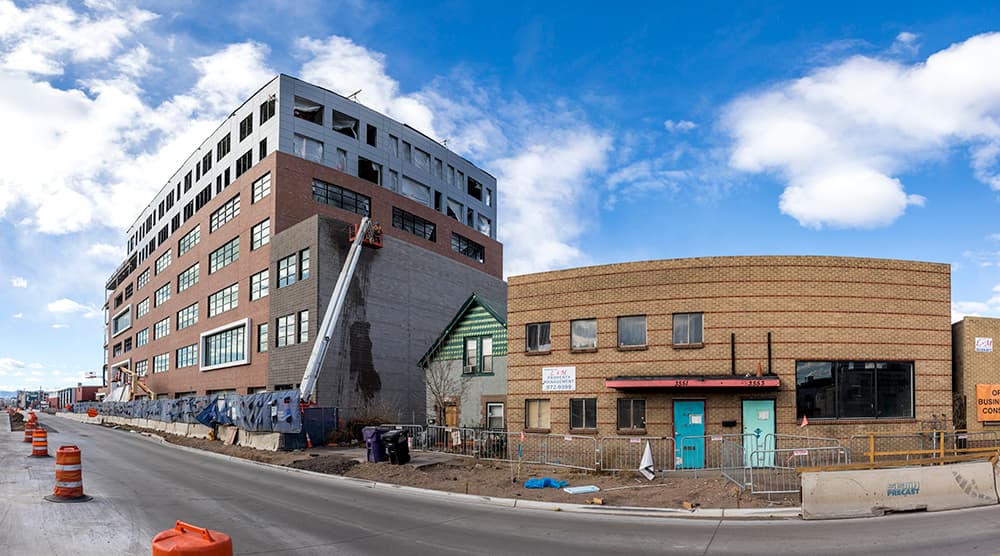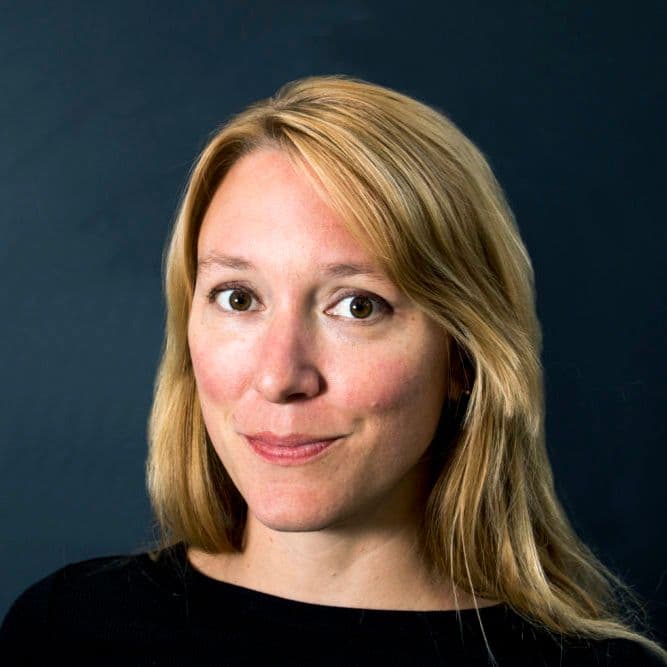
Denver Arts & Venues will provide $300,000 for "need-based funding for creative space tenant safety and building improvements" in a Safe Creative Spaces Fund.
The announcement comes right between the anniversaries of the Dec. 2 fire at the Ghost Ship DIY art space in Oakland killed 36 people and the Dec. 8 shutdown of Denver DIY spaces Rhinoceropolis and Glob.
The fund is an extension of the Safe Occupancy Program the city created earlier this year, which was meant to give people living in spaces like Rhinoceropolis and Glob a way to legalize their buildings without losing their housing.
But artists felt that wasn't enough. As Lauri Lynnxe Murphy, an artist and member of Amplify Arts, told Denverite in July, “It’s about money. If this is going to succeed, we need money.”
Some money was already coming into the community via a grant from Meow Wolf and additional support from the city — $70,000 in all across 19 Denver art and music spaces. That was a jumping-off point for the people and organizations who received financial support, but also for a larger effort from the city.
"We needed to start somewhere, and in order to raise additional funding, we needed to get that [Safe Occupancy Program] bill passed, which happened in July," said Lisa Gedgaudas, program administrator for Arts & Venues' Create Denver.
Now the city is putting $300,000 on the table, this time with administrative help from the RedLine nonprofit contemporary art center. According to a news release, RedLine will "facilitate support between artists and art businesses."
"RedLine has been with us through this process quite a bit, really since December, when the Ghost Ship fire happened," Gedgaudas said. "It's RedLine's mission to support community advancement and dialogue around these things ... so it was very natural."
Bree Davies, an advocate for the DIY community, said the RedLine partnership is key. The gallery hosted the first community meeting organized by Amplify Arts, and local artists trust the organization and its executive director, Louise Martorano.
"I think we saw that artists did not trust the city, which is why basically no one from the DIY community came forward initially to take advantage of the occupancy program," she said.
There was a feeling that coming forward to participate would mean "creating a registry of ourselves that could be used later on," she said. Without financial support, artists can't complete the program, then they're left on a list of unpermitted spaces with no way of getting up to code.
As of now, no one in Davies' circle has participated in the program. But with funding and the backing of a trusted arts organization, she hopes that might change.
"The city is still facing an affordability crisis. We’re losing artists very quickly. I know a lot of artists personally who came here initially because it was affordable," she said. "... We have to stop people leaving the city. That’s not only artists, but that’s working class folks, people who are on the lower end of the economic spectrum. I hope this is a step toward that."
The application opens on Dec. 12 at redlineart.org. Applicants are welcome to contact RedLine Program Manager Libby Barbee for free, confidential guidance at [email protected] or 303-296-4448.
There will also be a free informational session at the gallery, 2350 Arapahoe St., from 5:30 to 7 p.m. Dec. 12.
Here are the application requirements listed on the Arts & Venues website:
- Tenants must have a 2-year minimum lease term.
- Funding assistance is capped at $50,000 per building/space.
- Funds will support reimbursable construction/tenant improvements costs.
- Funding requires a percent match of the total project cost by the tenant or property owner.
- Final assessment of funding support will be determined on a case-by-case basis.
- In the event a funded project fails to produce or fulfill contractual obligations, penalties may include termination of the funding and repayment of previously received funds.
Funds will be distributed on a first-come, first-serve basis through Jan. 17, 2020. Preference in the application process will be given to:
- Applicants that can demonstrate a track record of working with the creative community or offering creative programs, as well as creative businesses and organizations;
- Tenants or owners that can demonstrate an immediate and critical need for assistance;
- Tenants that can provide a long-term lease (more than two years);
- Owners or tenants providing supplemental funds (match or more) to the Safe Creative Space Fund;
- Spaces or buildings that support multiple creative businesses or creative activities.
"The real big one for us is that tenants or owners can demonstrate an immediate and critical need for assistance," Gedgaudas said.
Where the requirements say the funds must be used to "support the reimbursable construction/tenant improvements costs," Gedgaudas said, that means "soft and hard costs toward tenant improvements." Similar to the requirements for the Meow Wolf money, that includes things like safety and infrastructure improvements, code compliance, construction plans and permit review.
Here's a list of steps to compliance that funding can support, as outlined by RedLine:
- RedLine can provide you with a commercial inspector or city code official that can inspect your space to assess its safety and any code compliance needs and provide an estimate for costs and timeline.
- The owner or tenant would then work with Community Planning and Development (CPD) and the Safe Occupancy Program to create a compliance plan and set extended timelines. This would involve the applicant hiring an architect or other licensed professional.
- CPD would approve a compliance plan. During this process, an owner or tenant can apply for a conditional certificate of occupancy and additional funding support through the Safe Creative Spaces Fund for improvements.
- The owner or tenant would secure a contractor and would would begin.
Gedgaudas said it's also important to note that through March 2, 2018, any buildings vacated or that have been inspected in response to complaints and tips since December 2016 are retroactively eligible for this funding.
Correction: An earlier version of this article was missing the year on the end date for the distribution of funds. It has been updated to include the year, 2020.












